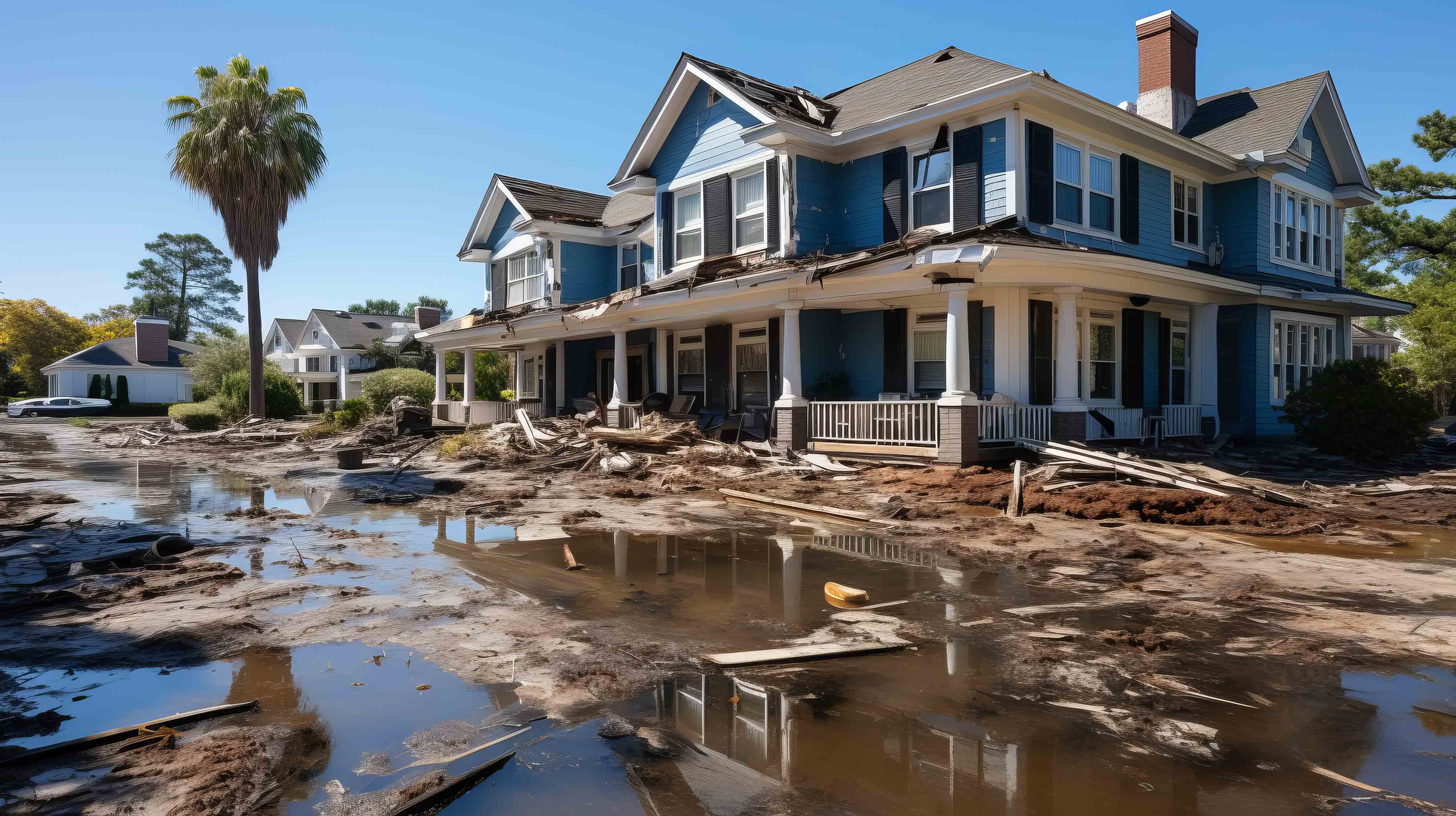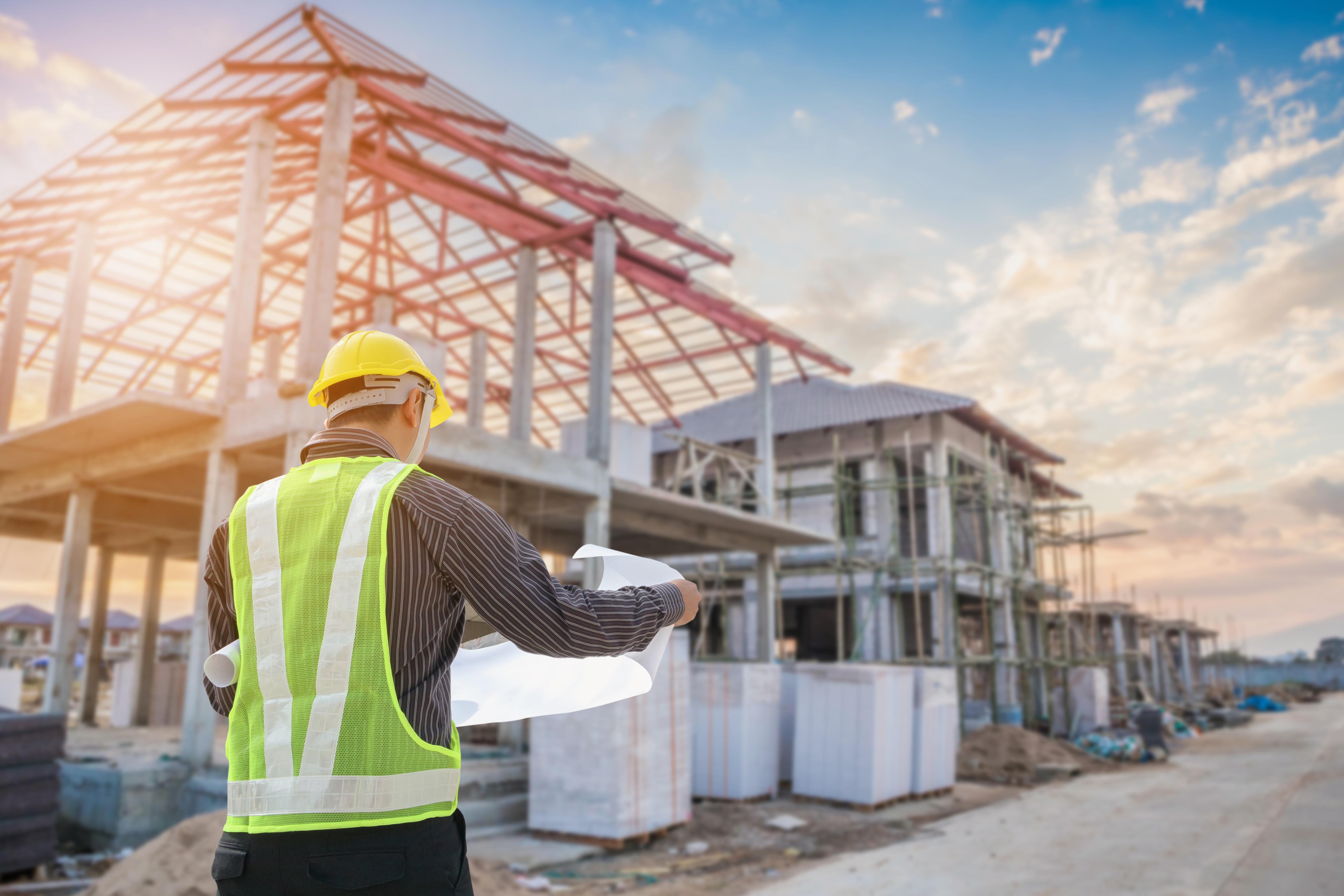Caprock Design + Build Blogs
Buildwise Journal
Caprock Design + Build Blogs
Buildwise Journal

5 Ways to Design Homes That Withstand Extreme Weather Events
Welcome to the first week of our series on building for resilience. As homebuilders, we understand the importance of building homes that last.
High-quality materials and high-performance building techniques are just two ways we can ensure the homes we create remain stunning and sturdy for decades to come. Another consideration that can be easy to overlook is designing homes that stand up to harsh weather.
As climate change continues to impact our planet, extreme weather events are becoming more frequent and severe. Ensuring the home is prepared for these events isn’t just a smart investment. It’s a crucial step in ensuring the safety and longevity of our living spaces.
Below, we explore the principles and strategies behind creating homes that remain safe and resilient in the face of challenging weather conditions. By following these tips, you can make sure each home you build is prepared for whatever nature may throw its way, from tornados to freezes and everything in between.

What Risks Do Extreme Weather Hazards Pose to Homeowners & Homebuilders?
When you live in an area like the Texas Panhandle, you know: Bad weather can take a toll on your home. Strong winds can knock down trees, hail tears up your roof, sudden downpours often lead to water damage, and hard freezes do a number on your pipes.
Many types of storm damage are easy to see. However, some go unnoticed. You likely won’t spot foundation shifts, mold growth, lifted shingles, or damaged sealant until they lead to bigger concerns. Left untreated, however, these issues can lead to costly repairs.
The initial step in designing resilient homes is understanding the specific risks posed by various extreme weather events. Hurricanes, tornadoes, floods, wildfires, and extreme temperatures each present unique challenges that necessitate tailored solutions.
By identifying the primary threats in a given area, builders can implement targeted strategies to mitigate potential damage.

5 Key Design Principles for Building Weather-Resistant Homes
1. Structural Integrity
The backbone of any weather-resistant home is its structural integrity. Without adequate structural integrity, you could see problems like:
Cracks in the walls or ceiling
Sagging or uneven floors
Sticking doors
Vibrations felt inside the home
Water damage, mold growth, and high moisture levels
A home with high structural integrity can withstand a number of extreme weather events, including high winds, winter storms, and even earthquakes. It also reduces the risk of costly future repairs, making it well worth the investment.
If you are renovating an existing home, there are steps you can take to evaluate the home’s structural integrity before building. This guide will walk you through the best ways to inspect your home’s structure.
2. Wind Resistance
Wind damage is a common occurrence in the Panhandle, where the average wind speed ranges from 12-13 MPH daily. The biggest cause of wind damage comes from straight-line winds from thunderstorms.
Straight-line winds blow at 58 MPH in one direction, rather than rotating like a tornado. These downdrafts, downbursts, and microbursts pack tornado-like forces in a solid beam of strength. These cause significant damage to the environment and building structures.
Winds 60-70 MPH can blow the siding and shingles off of houses. Small, unsecured buildings like outhouses or mobile homes can be damaged. Branches can be yanked off trees.
Winds 70-80 MPH can cause serious structural roof damage, throw heavy debris through walls, and break windows. Sidings and gutters can be torn off, and up to a quarter of gabled roofs will fall.
Winds 90 MPH or higher can moderately damage well-constructed homes, severely damage homes of average construction, and completely demolish mobile homes. These high winds are able to rip trees up from the roots and lead to total power loss.
In regions prone to tornados, wind resistance is even more paramount. Unlike straight-lined winds, rotating tornadic winds impacts a smaller area. However, the impact can be just as devastating if not worse. Tornados form a funnel that whips debris into the air. While straight-lined winds can reach speeds above 185 MPH, rotating winds in a tornado can exceed 300 MPH.

3. Flood Mitigation
Rain might not be a daily occurrence here in the Texas Panhandle. However, when it does rain, it pours. And many areas aren’t built to handle large amounts of rainfall, particularly in a short period of time.
The Texas Panhandle is comprised of playas, round depressions in the ground that fill with water and provide local wildlife with essential nutrients. As a result, the area doesn’t drain well. Surrounding areas drain into playas, which overfill and flood nearby homes and streets.
When you live in a flood-prone area like the Panhandle, flood mitigation is essential to prevent water damage and keep the home occupants safe. Even areas where rainfall is normal can benefit from floodproofing
4. Fire Resistance
In late February of 2024, the Texas Panhandle was devastated by the largest wildfire in Texas history. The fires, caused by a decayed utility pole, killed two people and destroyed more than 1 million acres of land. An estimated 138 homes were burned to the ground.
We can never predict when wildfires will spread, but we can do our best to protect our homes from fire. Fire resistance should be a high priority for both the interior and exterior of the home.
5. Temperature Regulation
Extreme high and low temperatures have become more common in recent years. Since the 1970s, the U.S. Environmental Protection Agency has reported more record-smashing highs and 3x more heat waves across the U.S., particularly during the summer months. At the same time, winter storms are on the rise due to the increased moisture in the warmer atmosphere.
These weather extremes aren’t just hard on your day-to-day life. They also impact your home’s structural integrity. Extreme temperatures can strain energy systems, reduce air quality, and warp wooden floors and decks.
5 Ways to Improve a Home’s Weather Resilience
To achieve true resilience, homes must integrate a combination of the principles mentioned above. Here are a few detailed strategies:
1. Reinforced Foundations and Walls
The best way to boost your home’s structural integrity, wind resistance, and fire resistance is by selecting the right building materials. Using reinforced concrete or steel-reinforced walls ensures superior strength and stability, maintaining the home's integrity during extreme events.
Steel framing, for instance, provides flexibility and durability, making it ideal for areas with high seismic activity. Steel, concrete, and insulated concrete forms also tend to stand up better to strong winds than wood or laminate.
2. Impact-Resistant Windows and Doors
Installing windows and doors designed to withstand high-velocity impacts prevents penetration from flying debris, which is critical during storms. These products maintain the home's envelope, reducing the risk of structural damage and injury.
Impact-resistant windows are made of layers of exceptionally strong polymer, reinforced to hold the glass together even if it shatters. High-quality brands test their windows to withstand hurricane-force winds, providing additional peace of mind.
The type of windows you choose can also impact your home’s fire resistance. Installing smaller double-pane windows made from tempered glass protects your home from extreme heat while still letting in plenty of natural sunlight.

3. Elevated and Flood-Proofed Design
In flood-prone areas, elevating the home's foundation above the floodplain, or expected flood level, can prevent water damage before it happens. Utilizing water-resistant materials like concrete and pressure-treated wood can reduce the damage of floods.
Another important consideration is your landscaping. Landscaping should be designed to promote effective water runoff and keep runoff away from the home. We recommend features such as:
Swales and detention basins
Rain gardens
Permeable driveways
Stone or driftwood barriers
Flood-tolerant native plants
High-performance building techniques like sealing gaps and cracks will keep water out of your home as well. For more detailed floodproofing tips, read this flood mitigation guide from ClimateCheck.
4. Fire-Resistant Materials and Landscaping
Selecting materials like metal roofing and creating fire-resistant landscaping are essential steps in wildfire-prone regions. Maintaining defensible space by clearing flammable vegetation and using non-combustible mulch and hardscaping elements can further reduce fire risk.
Other techniques that can fire-proof your home include:
Using fire-resistant materials such as metal roofing and fiber-cement siding
Creating defensible spaces by clearing vegetation and designing firebreaks around the home
Choosing non-combustible fiber-cement siding for an additional layer of defense against wildfires
Opting for detached garages or storage sheds to keep flammable gasoline and paint thinners away from the home
Treating wood decks or building with fire-resistant composite or concrete instead
5. Advanced Insulation and Ventilation
Proper insulation and ventilation are key to managing extreme temperatures. High R-value insulation helps keep homes warm in winter and cool in summer, while ventilation systems ensure adequate airflow without compromising the building's envelope.
Additional ways to reduce energy consumption while keeping the indoors comfortable include solar construction, energy-efficient windows, and high-performance HVAC units. While you can’t control the weather, these features will allow you to control your AC/heater without worrying about heating and cooling costs.

Building for Resilience Improves Property Value & Peace of Mind
Designing homes to withstand extreme weather events is a crucial aspect of high-performance home construction. By integrating advanced materials, thoughtful design principles, and proactive strategies into the homebuilding process, we can create homes that offer safety, durability, and peace of mind.
As we continue our exploration of advanced building techniques, we invite you to stay tuned for more insights and strategies to enhance the resilience and sustainability of your home. Thank you for joining us on this journey toward building homes that stand strong against the forces of nature.
And if you’re considering building a new home for your family that checks every box—and is built to last for years to come—Caprock Design + Build has you covered. As a certified builder of the Passive House Institute of the US, we follow a rigorous standard to ensure your new home offers the best in energy efficiency, comfort, and sustainability.

